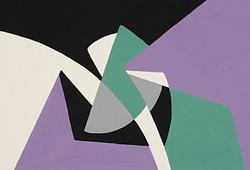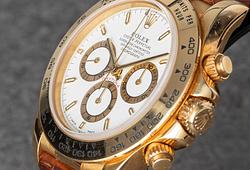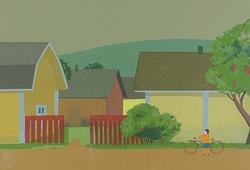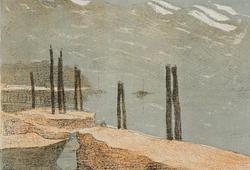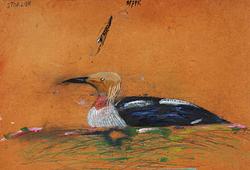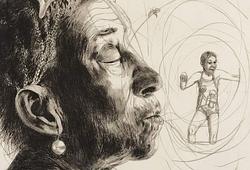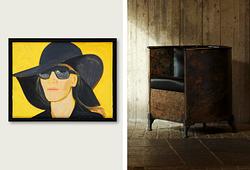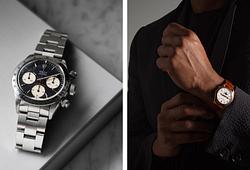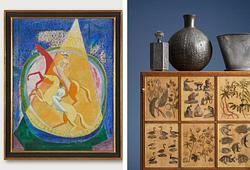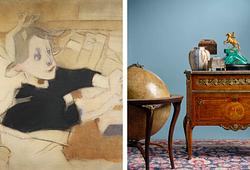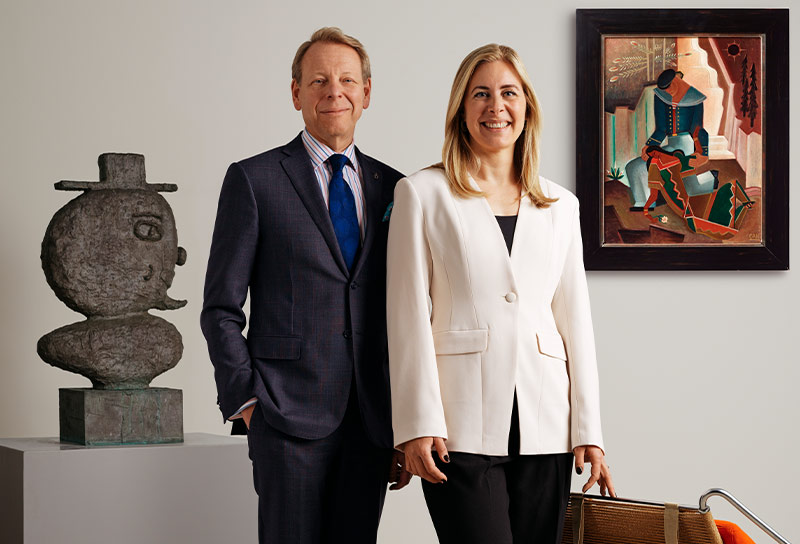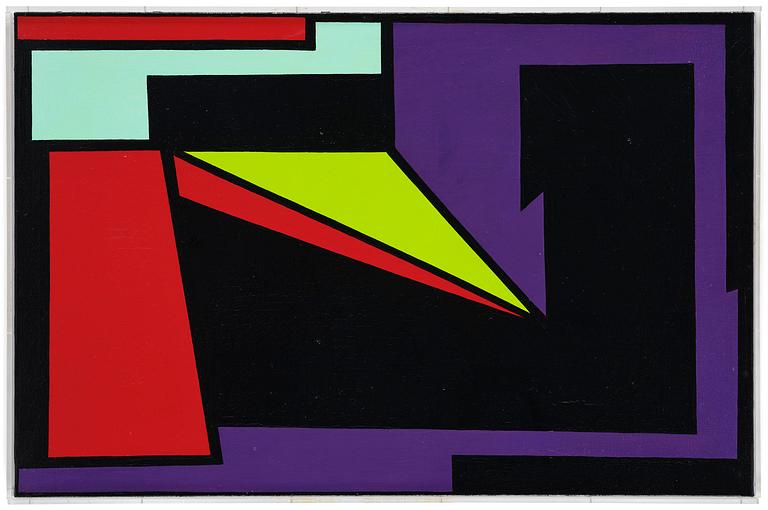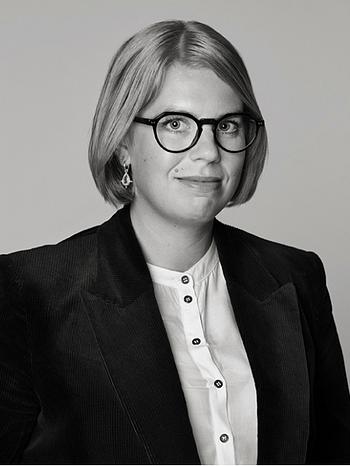Olle Bærtling
"ERBIK"
Signed Bærtling and dated Paris 1950 verso. Canvas 60 x 92 cm.
Provenance
Esther Robies Gallery, Los Angeles.
Bertil Nordenhake, Broby.
Sothebys, Cologne, Modern and Contemporary Auction Part I, "Property from the Private Collection Plogsties, North Rhine-Westphalia", 29th of March, cat. no 30.
Private collection, Stockholm.
More information
Olle Baertling var autodidakt och tämligen förlöjligad av både kritiker och konstnärskollegor under sin tidiga målarperiod vilken innefattade ett traditionellt föreställande bildskapande under 1930-talet och ett allt mer abstraherande måleri under 1940-talet. 1948 landar Baertling i Paris och inleder studier hos André Lhote vilka inte leder till någonting då lärare och elev har helt skilda uppfattningar om elevens inriktning. Ett byte till Ferdinand Légers skola innebar för första gången att en erfaren lärare visade uppskattning för Baertlings skapande. Med Léger som lärare gick förändringen snabbt mot ökad grad av abstraktion och kubism. Den verkliga framgången för Baertling inträffade dock först när han lärde känna konstnären Auguste Herbin som introducerade honom för galleristen Denise René som blev en härförare för geometrisk abstraktion och senare för den kinetiska konsten. Baertling blev starkt påverkad av Herbin, men även av andra av galleriets konstnärer såsom Alberto Magnelli, Victor Vasarely, Serge Poliakoff med flera. Somliga av dessa konstnärer arbetade med horisonter och vertikaler, andra med diagonaler eller kurvor och cirklar. Baertling inleder 1950 ett brett sökande efter sin egen särart. Han startar med punkter och cirklar, överger dessa snabbt för horisonter och vertikaler. Så småningom landar Baertling i målningar med trianglar eller ett slags diagonalkompositioner och den så kallade öppna form han därefter konsekvent arbetar med fram till sin död. Enligt Teddy Brunius i SAK Publikation 99, sker övergången till trianglar först 1951. I den aktuella målningen utförd redan 1950 uppträder dock trianglarna för första gången, i en komposition som utgör ett nyckelverk i Baertlings sökande efter sitt eget unika måleri. Redan här landar han dessutom i färgkompositioner som återkommer i hans helt mogna arbeten under flera decenniers skapande. Genom sin medverkan i utställningar hos Denise René kom Baertling att bli internationellt erkänd och eftertraktad av samlare som få andra svenska konstnärer.
Artist
Olle Bærtling was born in Halmstad in Sweden and is most notable for his painting and sculpture. Bærtling studied like Bengt Lindström in Paris for André Lhote and Fernand Léger. His first exhibition took place in Stockholm in 1949. Bærtling works foremost in a geometric, non-figurative style, approaching his art as a scientist would his research. In 1956 Bærtling discovered his open form, the open trangle with sharp angles which express speed. When in 1956 he positioned the apex of the triangle beyond the boundaries of the frame, the canvas became merely a segment of an event occurring beyond our visual field. The sense of speed is emphasized by the colour, which gives the impression of higher velocities the closer to the triangle’s apex. Black outlines are strong characteristics of Bærtling’s art, while they may seem straight, they actually bend inwards towards the large fields, counteracting their outward pressure. Colour was also essential to Bærtling’s work, whereby it was imperative that they could not be found in nature and were not associated to any form or object. Thus Bærtling only utilised secondary colours: violet, orange, green, and Bærtling-white (a week green-tinted colour). His open form is most evident in the sculptures he made from 1958 onwards. Bærtling consistently delved into the interplay between colors and shapes, remaining unaffected by external artistic trends throughout his life. Today, we can see how artists such as Ann Edholm have been inspired by Bærtling's creations.
Read more



